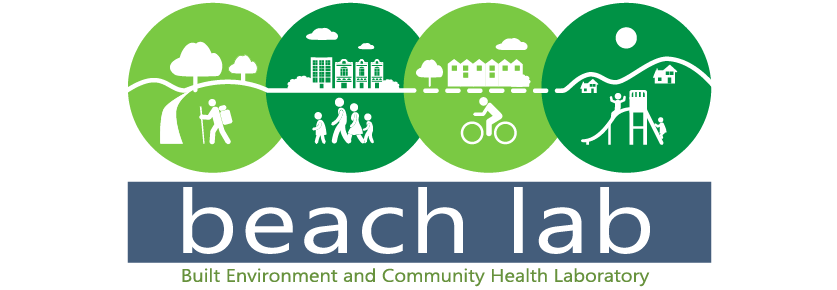| A tool for advancing parks and public health research and practice. | |
|
Access to parks and park use are associated with diverse environmental, economic, social, psychological, and physical health benefits. However, despite enthusiasm among researchers and planners, it is still unclear which park metrics (e.g., proximity, features, quality, surrounding neighborhood) are most associated with park use and how best to combine diverse indicators into a parsimonious measure of park access and exposure. ParkIndex is intended to be an evidence-based tool that will assist citizens and professionals in understanding and using information about community park access, as well as provide community members, park and public health professionals, and researchers with access to standardized and comparable data. The overall purpose of ParkIndex is to create a tool that would allow researchers, planners, and citizens to evaluate the potential for park access and use for a given area. |
|

FundingDevelopment of ParkIndex was supported by a grant from the National Institutes of Health/National Cancer Institute. |
|
Significance & Innovation
|
|
ParkIndex PrototypeA ParkIndex prototype was developed through data derived from the Kansas City Parks and Physical Activity Project using the Community Park Audit Tool (CPAT) and a survey of almost 900 residents related to park use. A manuscript about the prototype tool was published in Preventive Medicine and can be found here. |
|
Current StagesThe ParkIndex project will occur from 2016 – 2018 and include two primary stages: Phase 1: Input from community advisory board and key informant interviews to gather feedback on value, content, feasibility, and dissemination of ParkIndex. Phase 1 of the ParkIndex project was completed in Fall 2016. For a brief description of our findings, please see the ParkIndex Key Informant Interview Summary. Phase 2: Pilot testing in four communities:
Phase 2 of the ParkIndex project was completed in the Fall of 2017. For a summary of the data collection procedures and preliminary findings, please click here. |
|
Future Directions
|
|
More informationFor more information about ParkIndex, feel free to contact us: Andrew Kaczynski, PhD J. Aaron Hipp, PhD Jasper Schipperijn, PhD Ellen W. Stowe, MPH |
|


 Once developed, ParkIndex could serve a variety of potential functions for parks and public health research and practice:
Once developed, ParkIndex could serve a variety of potential functions for parks and public health research and practice: Potential future directions for ParkIndex include:
Potential future directions for ParkIndex include: